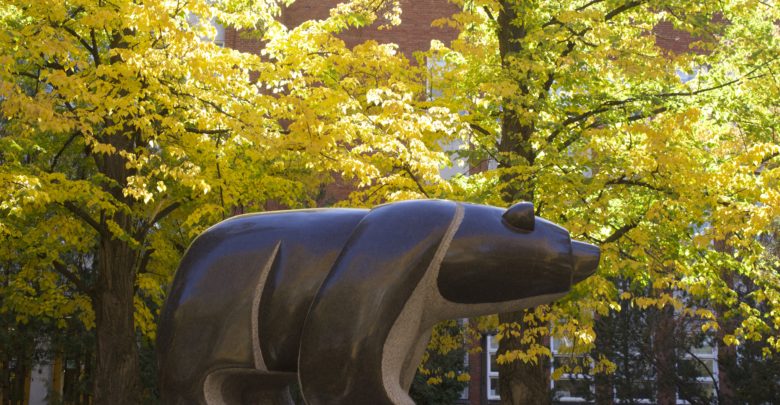U of A releases Truth and Reconciliation progress report
The TRC Report to Community Dashboard is apart of the U of A's commitment to truth telling, vice-provost (Indigenous programming and research) says.
 Emily Williams
Emily WilliamsOn September 26, the University of Alberta released a report on their work toward fulfilling the National Truth and Reconciliation Commission of Canada’s (TRC) Calls to Action.
The purpose of the TRC Report to Community and the dashboard is to increase transparency around the U of A’s work around truth and reconciliation, Florence Glanfield, vice-provost (Indigenous programming and research), said.
The dashboard tracks the U of A’s ongoing progress as they work towards completing the calls to action they have committed to as an institution. Each Call to Action is labeled either “little progress,” “in progress,” “progressing with impact,” or “fully complete.”
The U of A has made recent progress on their commitment to recruit Indigenous students. On September 28, the U of A signed a deal with Treaty 8 First Nations to offer dual-credit courses developed by the faculty of rehabilition medicine to First Nations students living on Treaty 8.
“We made a commitment to telling the truth about the history of the U of A,” Glanfield says
In addition to tracking progress, Glanfield says the report and dashboard reveal some of the U of A’s colonial history.
“The report and dashboard tells some of those truths about the roles that different people at the university and the institution itself had in the residential school system or in colonization,” Glanfield said.
“We made a commitment to telling the truth about the history of the U of A. [And,] we have started to do that truth-telling as a collective. We should be proud of [that] as an institution.”
Glanfield works with the Indigenous Advisory Council. This is a group of Indigenous, Inuit, and Métis U of A employees working toward the unversity’s goals. Together, the council developed Braiding Past, Present, and Future, the U of A’s Indigenous Strategic Plan.
The Indigenous Advisory Council is proud of their plan, as well as how it was received, Glanfield said.
“It was endorsed unanimously through the General Faculties Council (GFC) and the Board of Governors (BOG). To my understanding, that was the very first time that a strategic plan had been endorsed unanimously by both of those bodies.”
“We’re trying to look at some different pathways to invite Indigenous students to see themselves as part of the U of A,” Glanfield says.
Glanfield said the goal of the recent deal with Treaty 8 is for students in the program to see “themselves as health professionals in the areas within rehab.” She thinks this program will encourage Indigenous students to consider pursuing post-secondary education at the U of A.
“We’re trying to look at some different pathways to invite Indigenous students to see themselves as part of the U of A.”
Glanfields’ work has also involved collaborating and consulting with the U of A Students’ Union (UASU) and the Indigenous Students’ Union (ISU). This year, she has been regularly meeting with both groups.
“This year, the UASU along with the ISU have asked to meet with me regularly so that they can align [their work to] the work that we’re doing.”
On request of the UASU, the U of A conducted an Indigenous Student Success survey. At this time, Glanfield said they are planning to continue surveying students on a regular basis.
Work on Maskwa House will begin in 2026, Glanfield says.
In the 2016 strategic plan, the U of A expressed the goal of eventually building the Maskwa House of Learning. According to the recent Indigenous Strategic Plan, Maskwa House will be a place where all students “can grow and celebrate the unique and proud histories of Indigenous peoples, and where Indigenous students can access the social, cultural, and spiritual supports that enable their success.”
So far, they have been unable to find funding to build Maskwa House. However, Glanfield said the U of A still intends to build it.
“In Braiding Past, Present, and Future, we say that’s an activity that we will work on beginning in 2026.”
U of A has fulfilled Call to Action 62, Glanfield says.
The U of A is taking its role as educators of the future leaders of Canada and Alberta seriously, Glanfield said.
The U of A has fulfilled Call to Action 62. According to the dashboard, this call refers to educating “teachers on how to integrate Indigenous knowledge and teaching methods into classrooms.”
“The faculty of education has required a course for all teachers for a number of years now. [It’s] around understanding the histories and knowledge systems of the First Nations, Inuit, and Métis [peoples] (FNMI).”
As well, Glanfield said all new programs and existing programs being evaluated now have to be reviewed for Indigenous content. Glanfield said the U of A’s goal is to “make sure our students all have this experience of learning about FNMI.”
“If a department or a faculty wishes to have a new program at this university, or they are reviewing their programs, then they must address the question of where is Indigenous knowledge, peoples, or worldviews within their program.”
Furthermore, she thinks there is willingness to work towards reconciliation at the U of A.
“We didn’t get to this place in two or four years. We [are] an institution that’s 115 years old. We’re not going to achieve all of these goals overnight,” Glanfield said. “We are on a journey of figuring out how we do it and how our response is as an institution.”




